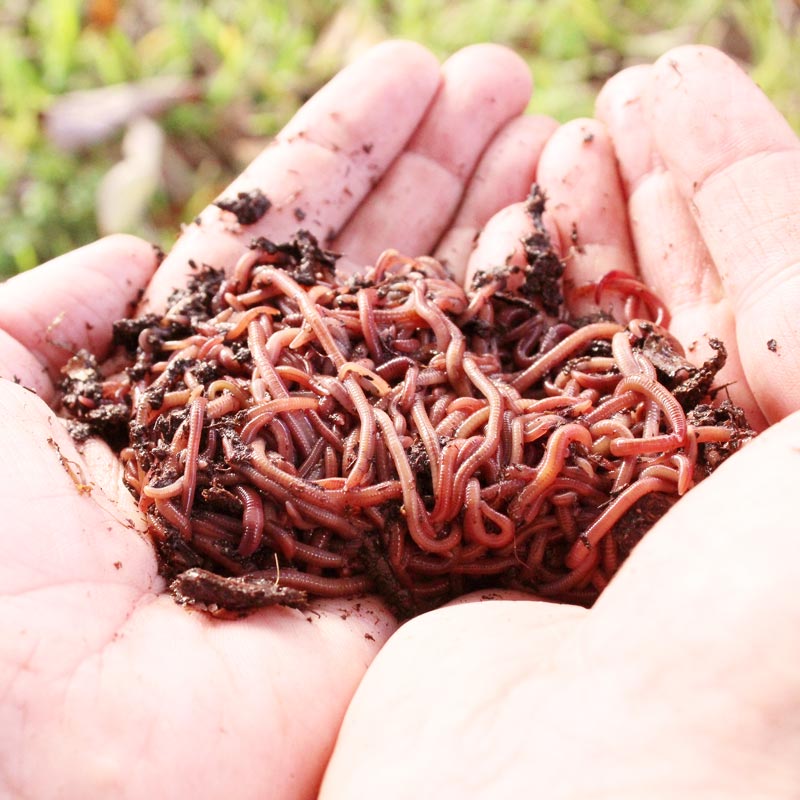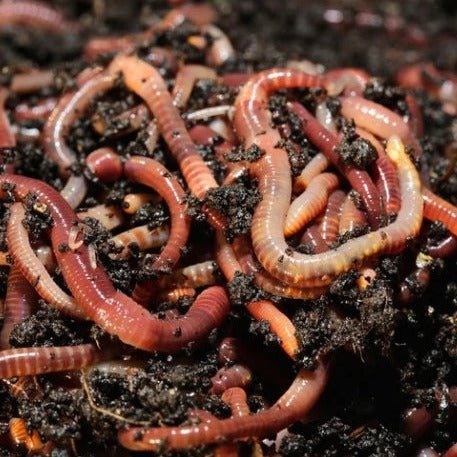Enhance Your Lawn’s Health and Beauty with Red Wiggler Express Lawn Care Solutions
Enhance Your Lawn’s Health and Beauty with Red Wiggler Express Lawn Care Solutions
Blog Article
The Unbelievable Globe of Red Wigglers: Boost Your Dirt Fertility Today
These tiny yet effective organisms change organic waste into beneficial worm spreadings, significantly improving soil wellness and promoting sustainable methods. As we explore the advantages of vermicomposting and the practical steps to create a reliable worm container, the prospective impact of these worms on your gardening success becomes increasingly apparent.
Understanding Red Wigglers
Red wigglers, scientifically referred to as Eisenia fetida, are a varieties of earthworm that play a vital function in boosting soil fertility. These worms flourish in organic-rich environments, such as compost heaps and rotting plant product, where they consume organic waste and excrete nutrient-dense spreadings. Their special makeup, featuring a segmented body and a clitellum, permits them to replicate rapidly and efficiently procedure large amounts of organic issue.

The environmental value of red wigglers prolongs past plain waste handling; they add to the dirt food web, fostering a diverse neighborhood of bacteria that further enhance dirt health and wellness. Understanding the biology and habits of red wigglers is essential for using their full potential in sustainable agriculture and horticulture methods.
Benefits of Vermicomposting
(Red Wiggler Express)Harnessing the power of red wigglers through vermicomposting deals many benefits that considerably enhance dirt health and wellness and fertility. Among the key benefits is the manufacturing of nutrient-rich worm spreadings, which are an excellent all-natural plant food. Red Wiggler Express. These castings have necessary nutrients like nitrogen, phosphorus, and potassium, advertising robust plant growth and enhancing plant yields
Additionally, vermicomposting improves dirt structure and oygenation. The presence of worm spreadings improves soil texture, enabling far better water retention and water drainage. This balanced dampness degree is crucial for root growth and the general wellness of plants. Moreover, red wigglers help break down natural matter, speeding up decay and recycling nutrients back right into the soil.
Vermicomposting additionally cultivates microbial activity, which is essential for a healthy and balanced soil community. Beneficial bacteria prosper in the existence of worm spreadings, aiding in the breakdown of organic products and boosting nutrition availability to plants.
Last but not least, vermicomposting acts as an effective waste administration service, minimizing garbage dump waste by reusing cooking area scraps and various other natural products. This not just contributes to environmental sustainability however additionally promotes a circular economic situation within horticulture and farming.
How to Set Up a Worm Container
Setting up a worm bin is an uncomplicated procedure that can substantially enhance your composting initiatives. Begin by picking a suitable container, which can range from a readily offered worm bin to a straightforward plastic or wooden box (Red Wiggler Express). Ensure the container has ample air flow; small openings in the lid and sides will certainly assist in air blood circulation
Following, create a bed linens layer to offer a comfy atmosphere for the red wigglers. This can be made from shredded newspaper, cardboard, or coconut coir, dampened to a damp, sponge-like uniformity. Fill the container to about one-third complete with this bedding product.
Once the bed linen is prepared, it's time to introduce the worms. Red wigglers prosper in organic waste, so location them delicately onto the bed linen. Cover the worms with a light layer of additional bed linen to aid them adapt.
Feeding Your Red Wigglers
Providing the ideal food for your red wigglers is vital for their health and wellness and the efficiency of your composting system. Red wigglers prosper on a diverse diet plan, largely including natural products such as vegetables and fruit scraps, coffee premises, and shredded paper. These products not only offer crucial nutrients but likewise add to the microbial activity in the worm bin, which is critical for the worms' digestion.
It is crucial to stay clear of certain foods, such as dairy items, oils, and meats, as these can bring in pests and create undesirable smells. Additionally, citrus peels and excessively zesty foods ought to be restricted because of their possible to hurt the worms. A balanced strategy to feeding involves checking the quantity of food introduced to the bin, making sure that it is eaten within a practical amount of time to avoid excess waste accumulation.
To advertise optimum food digestion, it is beneficial to chop or shred larger food items before adding them to the bin. This practice enhances the surface area for microbial action, facilitating quicker decomposition and enhancing the overall efficiency of your composting system. On a regular basis observing the worms' feeding behaviors will certainly aid you readjust their diet plan as needed.
Utilizing Worm Castings in Your Garden

(Lake Rhodhiss Bait)Integrating worm castings right into your yard can be achieved by mixing them right into the dirt or using them as a leading clothing. The slow-release nature of these castings ensures that nutrients are readily available to plants over a prolonged period, reducing the demand for artificial fertilizers. In addition, worm castings contain beneficial microbes that promote healthy and balanced soil communities, boosting the general resilience of your yard.
To take full advantage of the benefits, goal to use about one component worm spreadings to three components soil in your growing beds. Routine applications can lead to enhanced crop yields and healthier plants, making worm castings a very useful source for both beginner and skilled gardeners alike. By using this natural change, you can grow a successful yard while find more information contributing to lasting gardening methods.
Conclusion
In final thought, red wigglers exhibit the essential duty of vermicomposting in enhancing soil fertility. Their ability to convert organic waste into nutrient-rich castings substantially improves dirt framework and sustains microbial variety.
Report this page